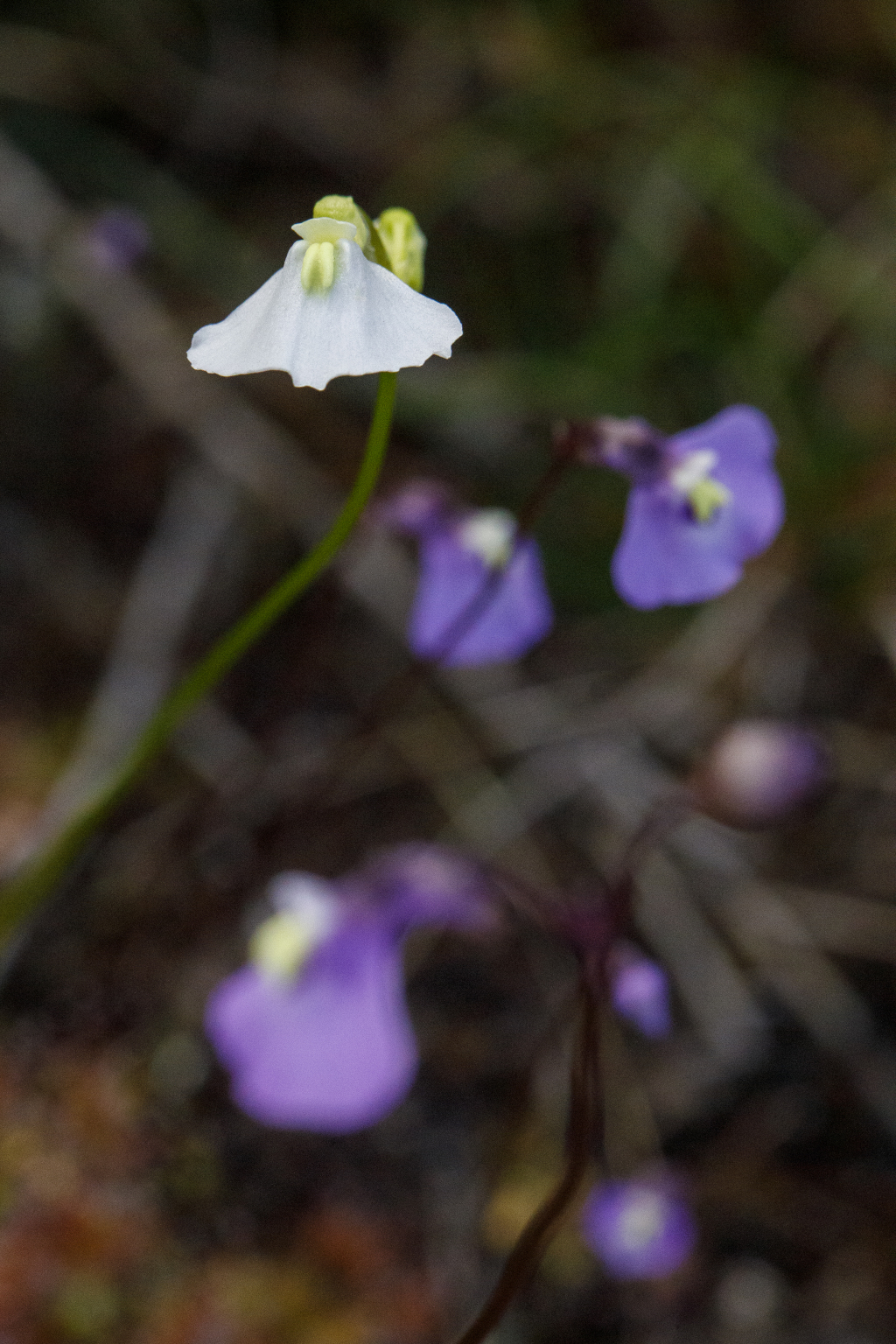Utricularia
Small herbs, annual or perennial, terrestrial, aquatic or epiphytic, without true roots; stems modified to function as roots, leaves and traps for the capture of organisms; tubers sometimes present. 'Leaves' basal, alternate, opposite or in whorls, sometimes apparently absent, sessile or petiolate. Traps very small, globose or ovoid, stalked or sessile, hollow, with a sensitive trapdoor mechanism, covered with various external appendages. Inflorescence usually racemose, rarely reduced to a single flower; bracteoles usually present; flowers subtended by basifixed or medifixed bracts (here termed 'fertile bracts'); calyx 2- or rarely 4-lobed; corolla 2-lipped, upper lip usually smaller, with a well-developed basal sac, apex entire or often 2-lobed, lower lip often large, spurred, often with a well-defined palate. Fruit a globose or ovoid capsule, usually opening by longitudinal slits; seeds 1–many, usually small, variously shaped and winged.
About 200 species, cosmopolitan; 57 species in Australia.
Jeanes, J.A. (1999). Lentibulariaceae. In: Walsh, N.G.; Entwisle, T.J., Flora of Victoria Vol. 4, Cornaceae to Asteraceae, pp. 547–553. Inkata Press, Melbourne.
 Spinning
Spinning



